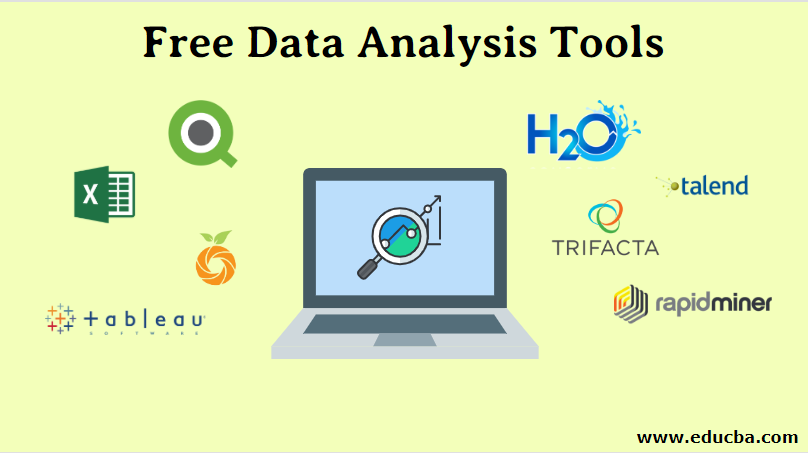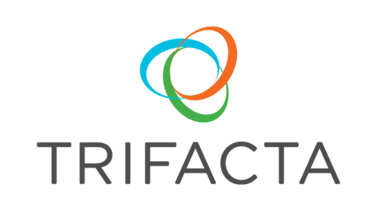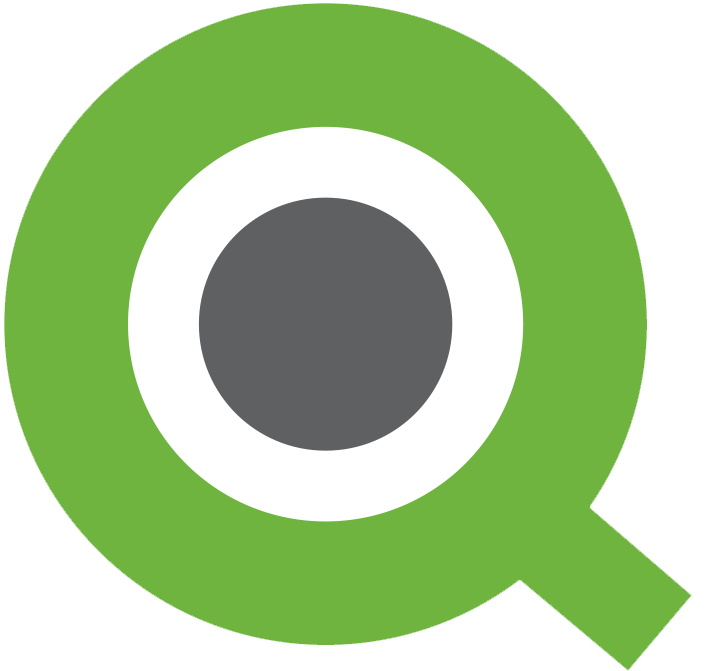
Introduction to Free Data Analysis Tools
Free data analysis tools are used to analyze data and create meaningful insights out of the data set. These are a set of tools that helps businesses to create a data-driven decision-making process. Some industry-known tools are very popular, such as Microsoft Excel, Tableau public, KNIME, Rattle GUI for R, Talend, H2O, Trifacta, Orange, RapidMiner, and Qlikview. These tools are supported with several out-of-the-box features that help in the data analysis process. These data analysis tools are easy to learn and develop the analysis solution very quickly compared to standard programming for data analysis.
Data Analysis Tools
Below are the different tools for Data Analysis.

1. Excel
Excel still attracts people to do data analysis; yes, it is still indispensable as an analytics tool. Many free online tutorials teach about Excel and VBA through which you can master Excel. All the features, such as exploring, summarizing, and visualizing data through various graphical tools, are performed in Excel rates in the cloud environment.
It is very easy to learn and master Excel. Excel is still an essential tool in data science and analytics. Knowledge of Excel will help you in your data science career. Though Microsoft Excel is not accessible, similar tools like spreadsheets, open offices, and others in the market provide the same features as Excel. One small drawback of Excel is that it can’t be used for large datasets.

2. Tableau
- Tableau is a free visualization tool for simple to complex data. It is interactive, and we can suggest labels, tools, the size of the column, and almost anything we can customize. The drag-and-drop interface is helpful in this software, and Tableau calculations can also be done. Anyone who doesn’t have any idea of analytics can see and understand data from the Tableau platform.
- Tableau is used to create dashboards and worksheets for data analysis and visualization. Tableau helps see data from a different perspective through its dashboards. One can easily enter the world of data science through Tableau. Also, Tableau integrates with Python and R programming languages.

3. Trifacta
Trifacta is an open-source tool for data wrangling, making data preparation easy for data analysis. Trifacta helps transform, explore, and analyze data from raw to clean arranged format. It uses machine learning techniques to help users in data analysis and exploration. The other name of Trifacta is Data Wrangler, which makes it clear that it is most useful in data cleaning.
Joe Hellerstein, Jeffrey Heer, and Sean Kandel developed it in 2012. Trifacta collaborates with AWS and operates in the cloud. It has bagged an award for machine learning deployment from AWS. Trifacta helps you to work with large datasets, unlike Excel. Also, text editing suggestions are incredible in Trifacta.

4. RapidMiner
RapidMiner is an integration tool for data preparation, machine learning, deep learning, and other data analysis techniques. The workflow, known as a process, involves the concept where the output of one process becomes the input for subsequent processes. Programming languages or their plugins can further extend this capability. Some versions of RapidMiner are free.
The products of RapidMiner include RapidMiner Studio, RapidMiner Auto Model, RapidMiner Turbo Prep, RapidMiner Server, and RapidMiner Radoop. We can inspect data by loading data into RapidMiner and doing calculations or sorting the data inside the tool. RapidMiner is mainly designed for non-programmers. RapidMiner also helps in data cleaning and preparing charts.

5. Talend
Talend is an open-source tool for data integration with the help of the cloud. Talend helps to import data and move it to the data warehouse as quickly as possible. Talend has a unified platform. Also, the community of Talend is robust, and you will never know that the person on the other side comes from which background.
Talend Platforms, Talend Enterprise, and Talend Open Studio help in almost everything related to data, so you may not look for another tool once you start working with Talend. Among the three, the most used is Talend Open Studio. The collaboration and management of Talend are commendable, as with their data integration.

6. Qlikview
Qlikview is recommended as the best tool for data visualization. It is faster, easy, and unique. A community in QlikView has discussion forums, blogs, and a library. Community helps to solve most of your queries. It shows the relationship between data using different colors. Qlikview allows users to make the right decisions from their different approaches to data visualization.
If you are interested in layout design, Qlikview is your way. Knowing about data modeling and SQL basics is good for proficiency in Qlikview.

7. Orange
If it is open source, the orange toolkit allows for a wide range of applications, from simple data visualization to complex machine learning algorithms. Additionally, it can be utilized in conjunction with the Python library. It is like a canvas where the user places the widgets and creates a workflow. The widgets canvas performs all the data functionalities. Users can explore various visualization techniques available in the tool.
The Orange tool has numerous add-ons, making it suitable for machine learning algorithms. It is also capable of performing data mining tasks.

8. H2O
H2O helps in finding patterns of data. Its applications are mostly machine learning and artificial intelligence, but it provides good data insights. H2O has a built-in function to guess the structure of the incoming data set.
There are also other tools like OpenRefine for sorting and filtering data, Fusion Tables for charts and visualization, Microsoft Power BI for data visualization and data wrangling, Google Dashboards to create reports, Plotly for statistical analysis, Gephi for statistical visualization, and the tools are many.
Conclusion
With a bit of practice, one can efficiently perform data analysis. All the tools will not help equally. It is good to select one tool and become a master in that tool. Understanding data is essential to know where we are regarding data analysis. Programming is not important in visualizing and analyzing data. But some tools make you closer to programming.
Recommended Articles
This is a guide to Free Data Analysis Tools. Here we discuss the basic meaning and different data analysis tools in detail. You can also go through our other suggested articles to learn more –



